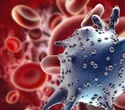New molecular imaging agent shows high accuracy in detecting liver cancer
HCC is the sixth most common cancer and the third leading cause of cancer-related deaths globally, accounting for 75–85 percent of all primary liver cancers. Due to its often silent progression, HCC is frequently diagnosed at an advanced stage, contributing to a five-year survival rate of just 18 percent. Most cases arise in the context of chronic hepatitis or liver cirrhosis, where underlying liver damage and fibrosis make early tumor detection particularly challenging.
Thirty-six patients with suspected HCC underwent 68Ga-XH06 PET/MR scans. Tumor uptake was measured, and tumor-to-liver ratios were calculated. Pharmacokinetics were assessed by analyzing tracer distribution in various organs, and safety was monitored through lab tests and vital signs. Surgical pathology was performed afterward to confirm HCC diagnoses.
68Ga-aGPC3-scFv was successfully administered to patients with no adverse effects reported. The imaging showed low background activity except for kidney accumulation, and the tracer effectively detected HCC lesions-including tumors smaller than one centimeter-with high contrast. Compared to pathology, the tracer demonstrated sensitivity of 90.63 percent and specificity of 100 percent. Tumor uptake values increased over time, confirming the probe's specificity and strong imaging performance.
"GPC3-targeted immunoPET provides clearer, more accurate imaging with high tumor-to-background contrast, enabling earlier diagnosis and better staging," said Xiaoli Lan, MD, PhD, chairwoman of Department of Nuclear Medicine at Wuhan Union Hospital. "For patients, this could mean life-saving interventions at earlier stages, improved treatment planning, and ultimately, higher survival rates. This breakthrough represents a new era in HCC diagnostics, and we are committed to accelerating its global translation, bringing earlier detection and better survival to liver cancer patients worldwide."
#ResearchChemistry, #ChemicalInnovation, #Science, #ScienceResearch, #ScientificResearch, #ResearchAndDevelopment, #ChemistryEducation, #ChemistryExperiments, #ChemistryLab, #ChemistryStudents, #ChemistryStudy, #OrganicChemistry, #InorganicChemistry, #PhysicalChemistry, #AnalyticalChemistry, #Biochemistry, #MaterialsChemistry, #TheoreticalChemistry, #AppliedChemistry, #MedicinalChemistry
Visit Our Website : researchchemistry.org
Nomination Link : researchchemistry.org/award-nomination/
Registration Link : researchchemistry.org/award-registration/
Member Link : researchchemistry.org/member-submission/
Contact Us: contact@researchchemistry.org
Social Media Links
Instagram : www.instagram.com/chemistryaward
Twitter : x.com/Chemistryaward
Pinterest : in.pinterest.com/chemistrymails




Comments
Post a Comment